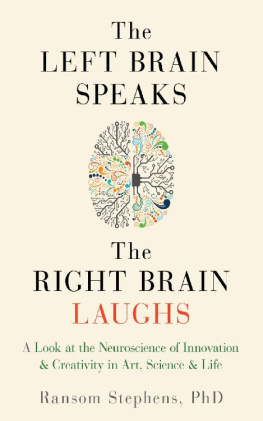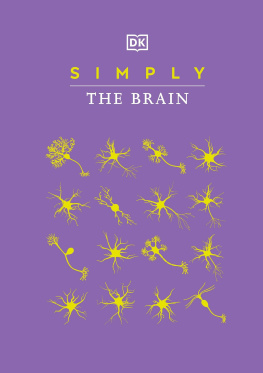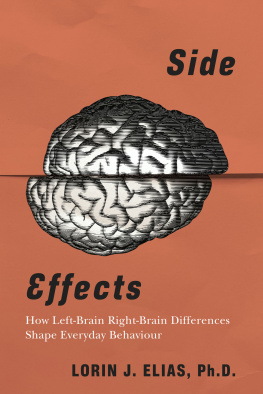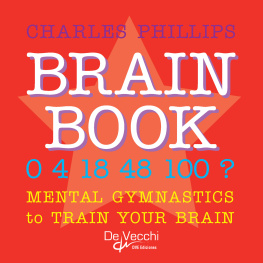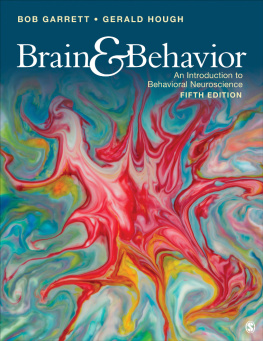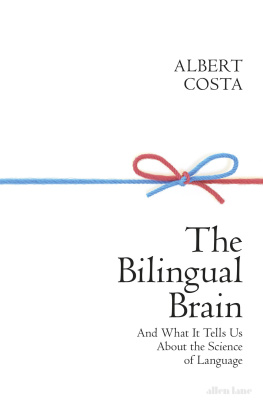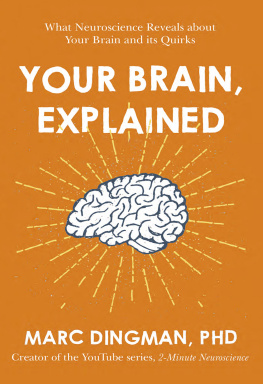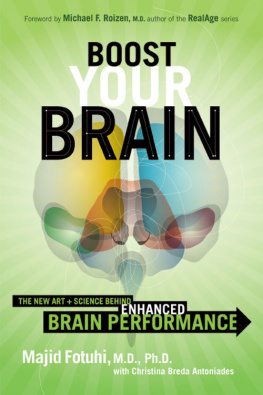The
LEFT BRAIN
SPEAKS
The
RIGHT BRAIN
LAUGHS
The
LEFT BRAIN
SPEAKS
The
RIGHT BRAIN
LAUGHS
A Look at the Neuroscience of Innovation & Creativity in Art, Science, & Life
Ransom Stephens, PhD

Copyright 2016 by Ransom Stephens.
All rights reserved. Except for brief passages quoted in newspaper, magazine, radio, television, or online reviews, no part of this book may be reproduced in any form or by any means, electronic or mechanical, including photocopying or recording, or by information storage or retrieval system, without permission in writing from the publisher.
Published in the United States by Cleis Press, an imprint of Start Midnight, LLC, 101 Hudson Street, Thirty-Seventh Floor, Suite 3705, Jersey City, NJ 07302.
Printed in the United States.
Cover design: Scott Idleman/Blink
Cover photograph: iStock
Text design: Frank Wiedemann
Illustrations: Ransom Stephens
First Edition.
10 9 8 7 6 5 4 3 2 1
Trade paper ISBN: 978-1-63228-046-6
E-book ISBN: 978-1-63228-047-3
Theres more to it than that.
MILES DYLAN,
FROM HIS BOOK EVERYTHING
Miles Dylan is a fictitious philosopher invented by college roommates Michael (Miles) Vinson and Chris (Dylan) Young. Miles Dylans lack of actual existence (and consequential lack of actual publication) renders tremendous freedom in attributing tidbits of wisdom that, unattributed, might be taken less seriously. For a complete reference, see The Toilet Papers by Miles Dylan.
TABLE OF CONTENTS
YOU & ME
IT STARTS WITH ON/OFF.
As Starla wakes up, the light seeping through her closed eyelids tells her that the room is no longer dark.
Before we can understand anything about visual awareness, we have to understand the difference between light and dark. Lets call our humble detector of day or night, shadow or illumination, first-order vision. By growing higher orders of visual consciousness from this simple starting point, we trace the complex from the simple.
Besides, we have to start somewhere; it might as well be morning.
Now, with the alarm clock playing a wakeful tune like Enter Sandman, Starla opens her eyes, stretches, and drags her sleepy ass out of the sack.
She hears rain tapping on the window and puzzles over how such bright light can leak around the curtain on a rainy day.
Pulling aside the curtain, she beholds the magic of coexisting rain and sunshine. A heavy, gray cloud lumbers past. The late morning sun shines from behind her, working its rays under the cloud and lighting the hills across the valley from her window. At first, the colors look wispy, but then she sees a rainbow arcing over the horizon and, having seen it, she cant unsee it: red at the top followed by orange, yellow, green, blue, indigo, and violet at the bottom.
Perhaps the mnemonic device Roy G. Biv comes to mind; or maybe she muses on the magic and wonders if its a metaphor come to life: Is she somewhere over the rainbow? Maybe she pictures light entering the spherical raindrops, bending into the component colors as in a prism or on a Pink Floyd album cover, and then reflecting off the other side of the raindrops back to her eyes, or maybe she jumps into her clothes and heads out in search of the pot of gold at the end of that rainbow.
Well see how the story ends, but we know that it begins with a dichotomy: light and dark, a dichotomy that expands into a spectrum of colors when she pulls the curtain open. So it is with the left-brain/right-brain dichotomy. And so it is with every scientific endeavor. We dont start with the simplest situation because its a good idea; we start at this first-order, on/off level of understanding because were dumb apes who dont have a hope of understanding something complicated if we dont start with something easy. Okay, Im a dumb ape; youre a glorious human.
Lets back up and take a closer look at Starlas experience. Her first-order visualization was light and dark. Then, with her light detectors wide open, her second-order visualization brought a spectrum of colors; a spectrum that can be divvied into an infinite number of colors between red and violet or, for that matter, between red and orange.
If shes into it, maybe she starts assigning the colors names like atomic tangerine and razzle-dazzle rose, dividing the colors into categories, subcategories, and sub-subcategories. This sounds boring to me, sort of like stamp collecting. A lot of science is like stamp collecting, but thats not the kind of science were doing in this book.
After zoning out on the rainbow, Starla goes into the kitchen to fire up the coffeemaker. Still thinking about the infinite variations of color within the rainbow, she notices the Metallica black-light poster over the microwave. Rather than question the ridiculousness of her roommates interior-decorating choicehaving just woken up, after allshe fixates on the artificially bright fluorescent colors of the fire-breathing, dragon-demon, heavy-metal poster; mostly gonzo green and electric lava. She realizes that these colors are not among the infinite number of colors in the rainbow.
What the hell? she thinks to herself.
Scooping coffee into a filter, she recalls that human eyes detect only three colors, and that every color we see is a combination of red, green, and blueshe thinks the three colors might have fancier names, maybe like the overpriced ink cartridges in the printer that came free with her laptop: magenta, yellow, and cyan. The thought causes her to pour an extra scoop into the filter.
She figures that those black-light colors must be a combination of the three fundamental colors or she wouldnt be able to see them. And since the colors in a rainbow come from separating the yellowish-white light of the sun into its spectrum, black-light colors must be some sort of combination of red, green, and blue, but in a way that emphasizes the separate components differently than sunlight does in rainbows.
She hits the power button and hopes the coffee starts dripping soon. It occurs to her that too much thought in the morning could be lethal, a thought that brings to mind the color of coffee. She dubs it heavy-metal patina, which gives her a giggle.
As our heroine fixes her morning java, lets note that she has worked her way to a third-order understanding of color. Three layers of complexity: light-dark, the rainbow spectrum, and now fluorescent black-light colors.
Finally sipping her coffee, Starla wonders how her roommate convinced her that a Metallica poster was appropriate kitchen art.
With sufficient caffeine rushing through her veins, Starla accelerates into action, transforming from a color-contemplator into a business professional with meetings to attend in faraway lands. When shes packed tight into a coach window seat staring at the same raincloud, and presumably the same rainbow, she wonders why theyre called bows. Shouldnt they be called ribbons? From up here, the rainbow doesnt touch the ground. Its not even an arc; its a closed circle. Pondering the time wasted by leprechauns searching for pots of gold, she realizes two things: First, the reason why Ireland can never seem to maintain economic prosperity, and second, that theres another rainbow. The secondary rainbow is far dimmer than the primary, and the colors are reversed, with violet on top and red at the bottom. Starla has made a fourth-order discovery.
1.1 PEELING THE IGNORANCE ONION
I opened our book with Starlas rainbow experience because it shows how science progresses. We peel the onion of ignorance one layer at a time.
Next page
